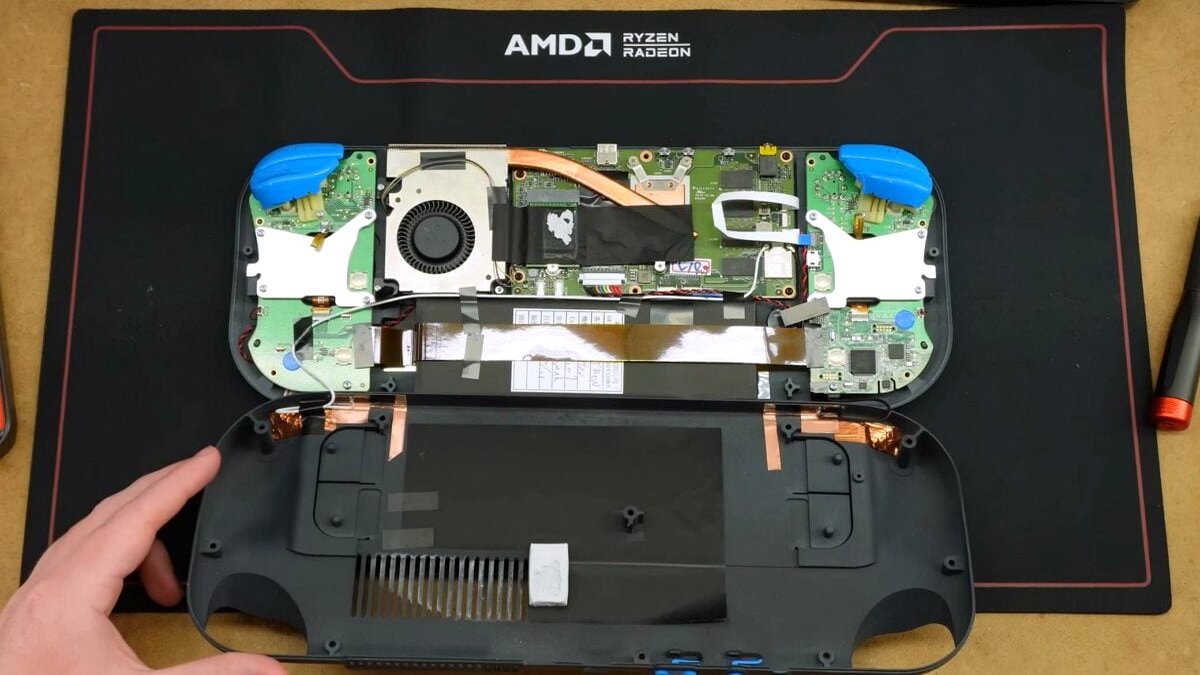Technical Deep Dive
A recently revealed stunning prototype teardown suggests the handheld x86 gaming PC landscape could have taken a dramatically different path, showcasing Valve's early Steam Deck engineering sample supported discrete graphics cards—a feature that never made it to the final retail product. Club386's analysis of the rare POC-34 prototype demonstrates Valve was actively exploring external GPU connectivity and potentially internal discrete graphics integration during the Steam Deck's development phase, as revealed by this $3,000 eBay acquisition.
Engineering Sample 34: A Glimpse Into Valve's Alternative Vision
The prototype, designated POC-34 and analyzed by Bringus Studios, showcases radical departures from the Steam Deck we know today. Instead of the custom AMD Aerith APU that powers retail units, this engineering sample features a much weaker AMD Ryzen 7 3700U processor with just four Zen+ cores, eight threads, and integrated Radeon Vega 10 graphics. With only 8GB of RAM compared to the retail unit's 16GB, the prototype delivered significantly worse gaming performance—managing just 15 frames per second in Counter-Strike 2 compared to modern Steam Deck capabilities.
However, the most intriguing discovery lies in the prototype's BIOS configuration. VGTimes' recently published technical analysis indicates the system explicitly supported adding discrete graphics cards through an unknown interface. "The system actually supported adding a discrete graphics card—a feature that never made it to the final product," confirms the teardown analysis, suggesting Valve was seriously considering expandable graphics capabilities for their handheld gaming PC.
Mysterious External GPU Interface
Perhaps most compelling is the presence of an unlabeled connector on the prototype's motherboard that appears designed for external GPU connectivity. This discovery raises fascinating questions about Valve's original vision for the Steam Deck as potentially the first truly upgradeable handheld x86 gaming device. The Club386 analysis suggests this could have supported external graphics solutions similar to laptop eGPU implementations, or possibly even internal discrete GPU modules for enhanced gaming performance.
"Such a move would have provided more rendering horsepower to the handheld, but would've come at the price of power consumption," notes the technical assessment. This design choice would have fundamentally altered the handheld gaming PC market by introducing upgrade paths typically reserved for desktop systems, potentially creating a modular ecosystem around the Steam Deck platform.
Design Evolution: From Steam Controller DNA to Modern Ergonomics
Beyond the graphics capabilities, the prototype reveals significant ergonomic evolution in Valve's design process. The POC-34 featured massive circular trackpads directly inspired by the Steam Controller, drastically smaller joysticks than the final version, and an entirely different shell curvature. These design elements suggest Valve was initially prioritizing trackpad-based control schemes before shifting toward more traditional gamepad ergonomics in response to user feedback and market research.
The prototype's internal layout, however, closely resembled the final retail design, indicating Valve had locked in their thermal and component placement strategies relatively early in development. The cooling solution and major component positioning remained consistent between prototype and production, suggesting the discrete GPU support was abandoned for reasons beyond physical space constraints.
Market Impact Analysis: The Road Not Taken
The revelation of discrete GPU support in early Steam Deck prototypes highlights a crucial inflection point in handheld gaming PC development. Had Valve pursued this upgrade path, the current market landscape dominated by increasingly powerful integrated solutions like the ROG Xbox Ally X's AMD Ryzen AI Z2 Extreme might have evolved toward modular, user-upgradeable systems instead of closed, integrated designs.
This alternative approach would have created entirely different competitive dynamics, potentially positioning the Steam Deck as a platform for incremental graphics upgrades rather than generational hardware refreshes. The discrete GPU support could have enabled users to maintain their investment while upgrading graphics capabilities as technology advanced, similar to Framework's modular laptop approach applied to handheld gaming.
Why Valve Ultimately Abandoned Discrete Graphics
While the prototype demonstrates technical feasibility, several factors likely contributed to Valve's decision to abandon discrete GPU support. Power consumption represents the most obvious challenge—discrete graphics would have significantly reduced battery life in a device already constrained by thermal and power limitations. Additionally, the complexity and cost of implementing reliable high-speed graphics interfaces in a handheld form factor would have increased manufacturing costs and potential failure points.
The gaming performance gap revealed in the teardown also suggests Valve recognized the AMD Ryzen 7 3700U foundation was insufficient for their target experience. By moving to the more powerful custom AMD APU in the final design, Valve achieved better overall system performance while maintaining the power efficiency crucial for handheld gaming.
Future Implications for Handheld Gaming PC Design
The POC-34 prototype's discrete GPU capabilities offer valuable insights for current handheld gaming PC manufacturers facing similar trade-offs between performance, portability, and upgradeability. Companies like ASUS with their ROG Xbox Ally series and upcoming competitors must balance integrated performance gains against potential modular upgrade paths.
This historical perspective becomes particularly relevant as handheld gaming PCs approach performance parity with entry-level desktop gaming systems. The question of whether future handheld devices should prioritize maximum integrated performance or embrace modular upgradeability remains unresolved, with the Steam Deck prototype representing the road not taken in this crucial design decision.
Sources
Note: All sources have been verified for accuracy and editorial standards compliance.
